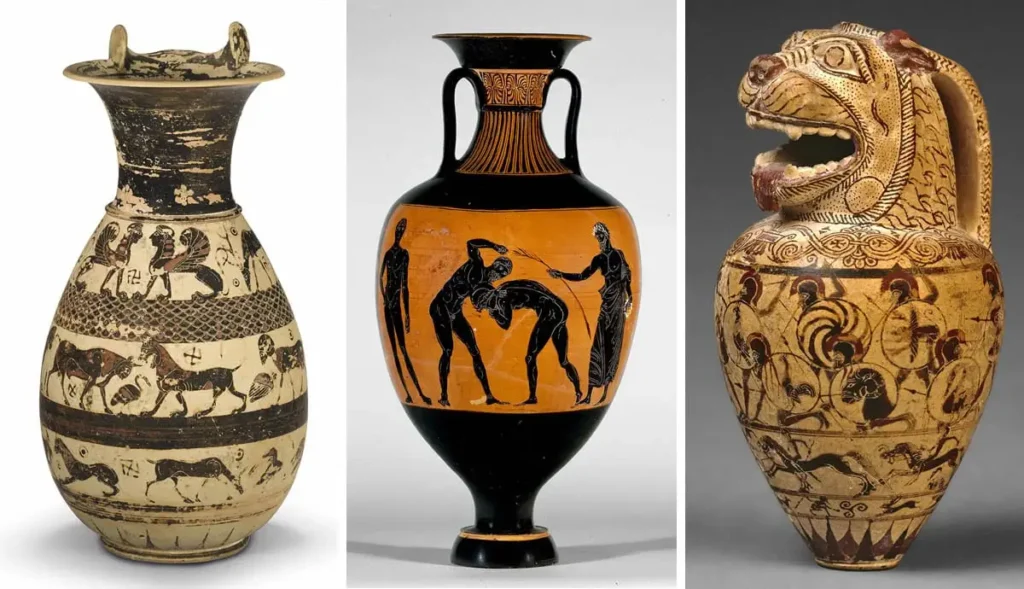Ancient Greece is widely recognized as a cradle of Western civilization, having played a crucial role in the development of art, philosophy, politics and many other cultural aspects. Among the various forms of artistic expression, painting played a significant role in ancient Greece. But make no mistake: the vast majority of them did not paint, as we do today, using canvas. Greek painting was done mainly through ceramics and mosaics.
Greek Painting on Ceramics
Greek pottery is one of the most notable forms of art that have come down to us. This tradition began around the 8th century BC, reaching its peak in the Archaic and Classical periods. Ceramic vessels were not only utilitarian, but also important vehicles for expressing the artistic creativity and mythological narratives of the time. According to the Metropolitan Museum of New York, Greek ceramics (and, consequently, their painting) are divided into the following periods:
Proto-Geometric Period (1050-900 BC)
It is characterized by abstract elements such as triangles, wavy lines, circles and wide bands created with a simple paint made from alkaline potash (or soda) and black ferrous oxide.
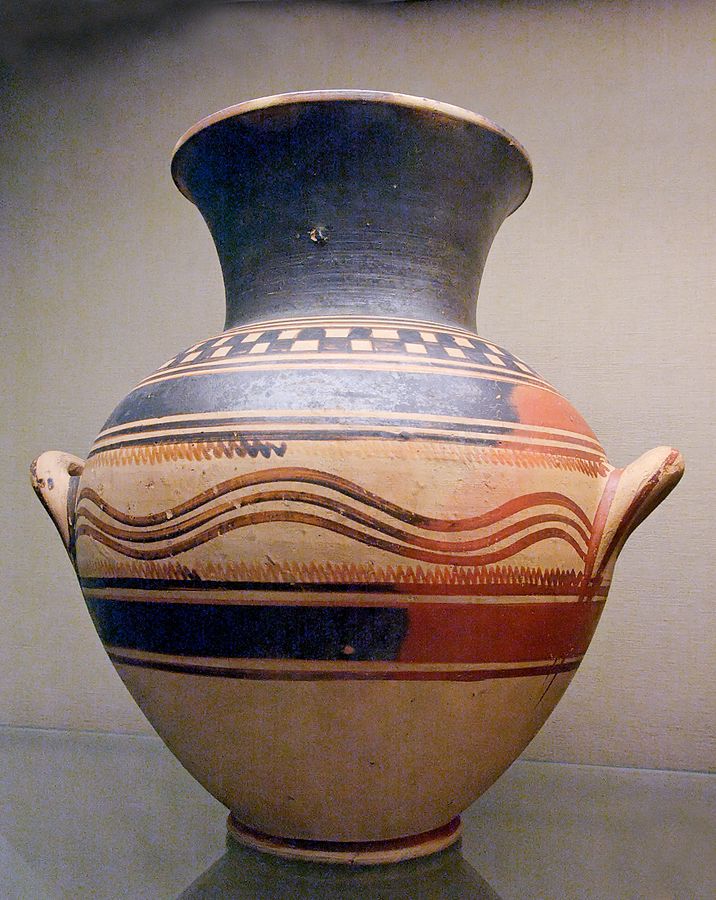

Geometric Period (9th-8th centuries BC)
This period is categorized by the extensive use of black varnish, as well as the introduction of figurative motifs. There is very little empty space with this style. The figurative motifs of this style are mere silhouettes and lack the detail of later styles.
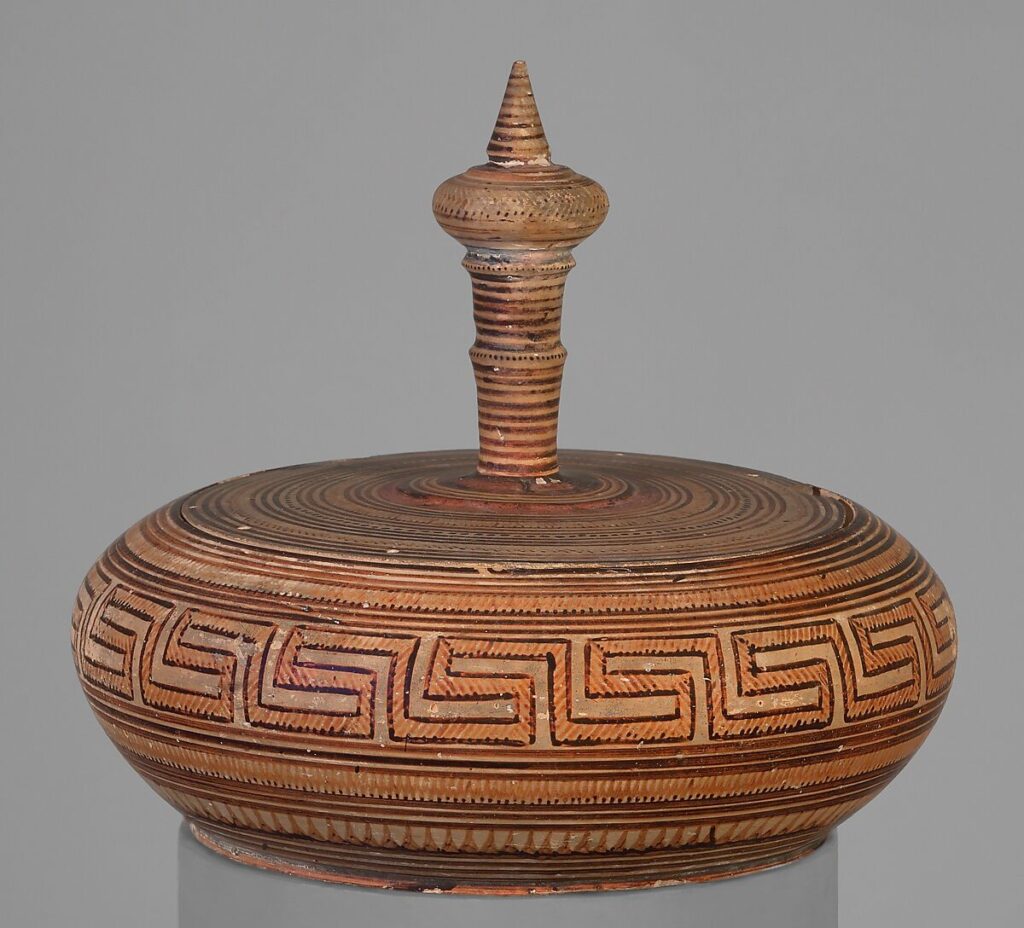

Neck amphora in terracotta Greece, Attica. 4th quarter of the 8th century BC
Orientalized (or Proto-Corinthian) Period (8th-7th centuries BC)
This style was heavily influenced by eastern cultures. New motifs such as sphinxes, griffins, and lions were common, as were new floral and faunal motifs.
This example of Greek pottery is just 7cm tall and shows the skill required to paint these designs. The sphinx was the most common decorative motif of the Orientalized period.
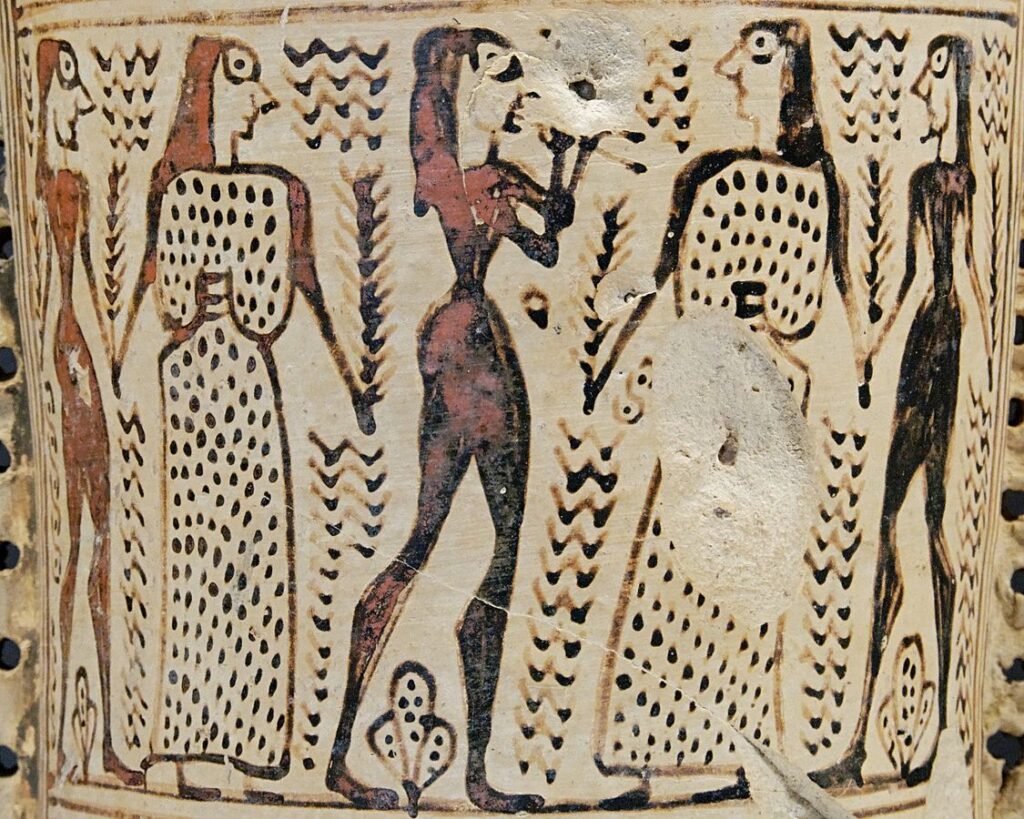
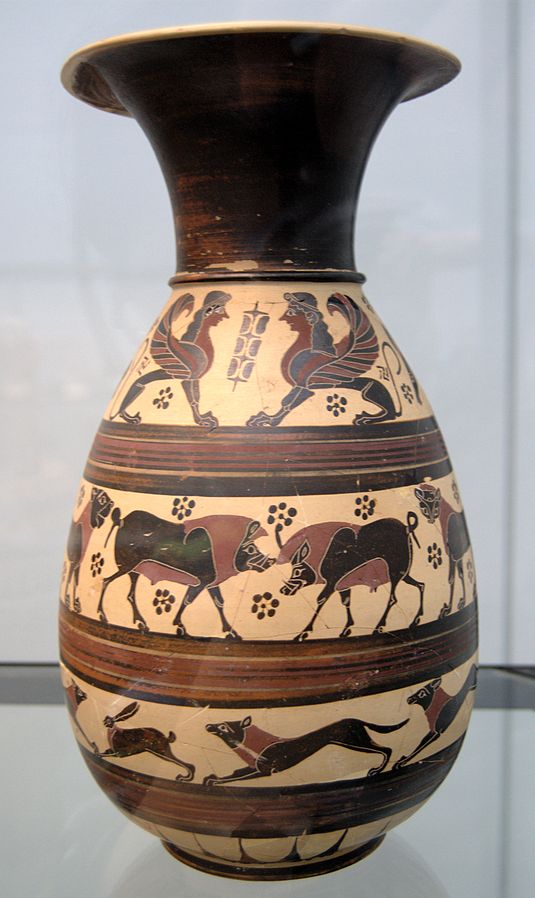
Black Figure Period (circa 620-480 BC)
It is perhaps the most widely known style of painting from Greek Antiquity. This style gets its name from the depiction of figures using black paint on a red background (the exception being female figures depicted with white paint).
The Black Figure style evolved from the Proto-Corinthian style of representing silhouettes and transformed into more realistic designs. Details were incised into the paint before the firing process, as shown in the close-up image.
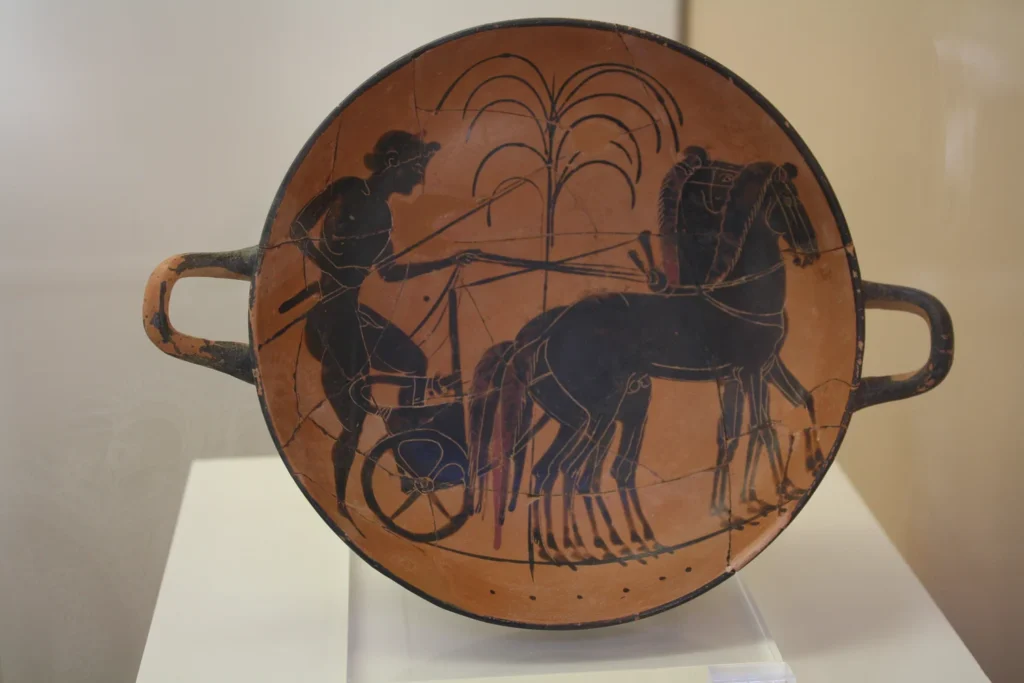
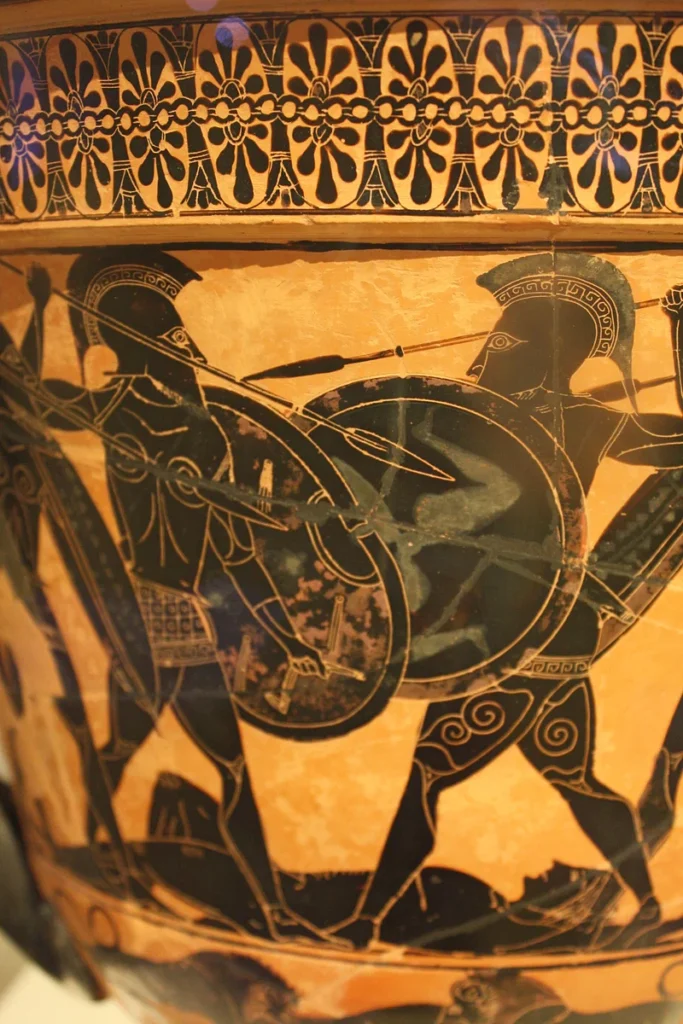
Red Figure (circa 480-425 BC)
This style is similar to Black Figures, but a reversal in the firing technique results in a red figure on a black background. This allowed painters to create details by directing the paint rather than incising, creating better anatomical detail and perspective.

Terracotta amphora (jar). Signed by Andócides. Attributed to the Painter Andócides. Attributed to the Painter Lisípides. here. 530 BC

White Background Style (5th-4th centuries BC)
Unlike other styles such as Black Figure and Red Figure, the colors of this style were not produced by the firing technique, but rather by the use of paint and gilding on the surface of the white clay, allowing for a wide range of color possibilities.
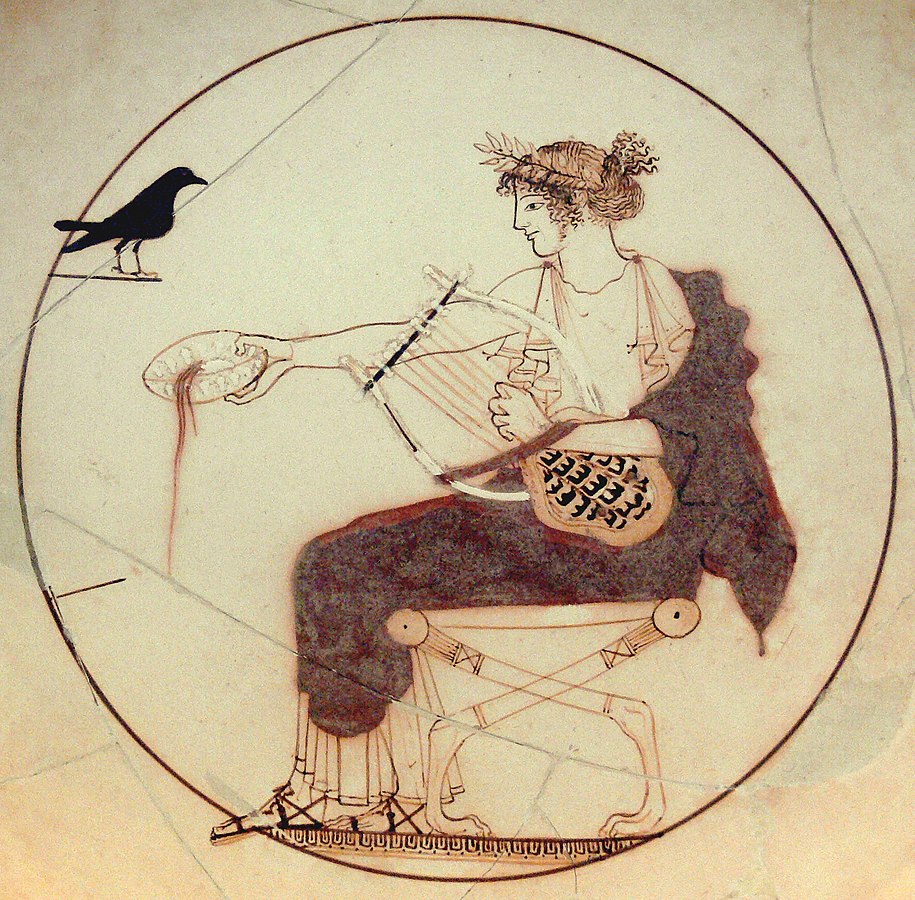
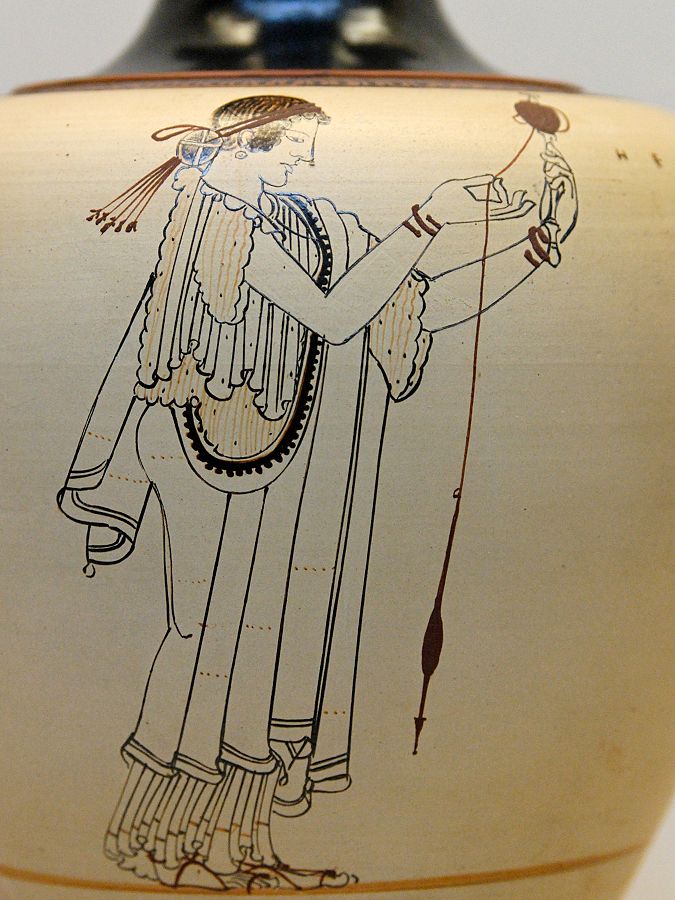
Greek Painting in Mosaics
In addition to ceramics, the Greeks also left an impressive legacy in the art of mosaics. Although the mosaic technique originated in the Middle East, the Greeks improved it and integrated it into their artistic expressions.
Greek mosaics were often found in public spaces, such as temples, squares and the homes of wealthy people. These works were composed of small fragments of colored stones, shells, and occasionally glass. The themes ranged from mythological scenes to representations of nature and everyday life.
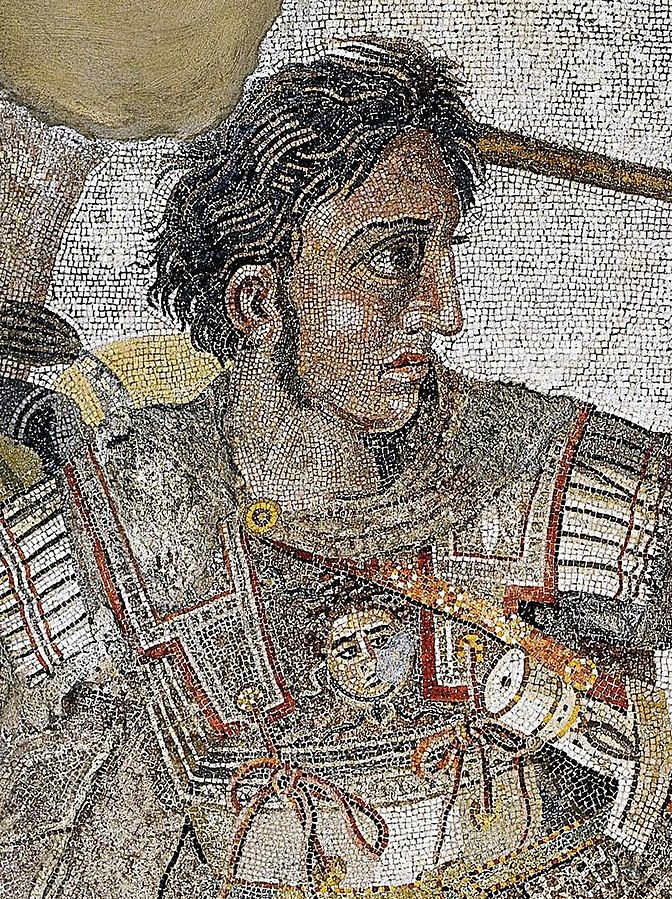
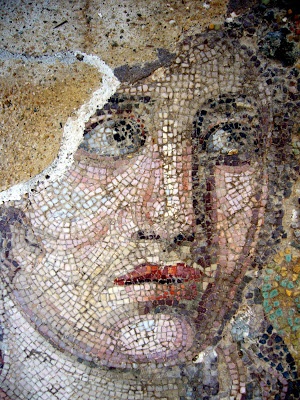

References
Protogeometric style – Wikipedia
Greek art theory influences future art | Resource | RSC Education
